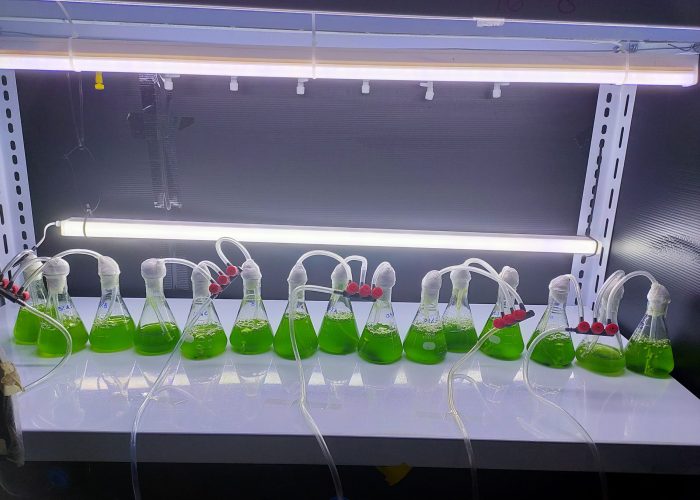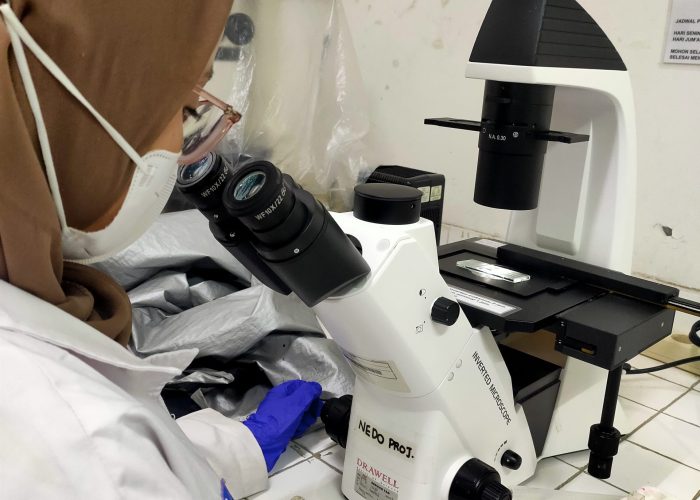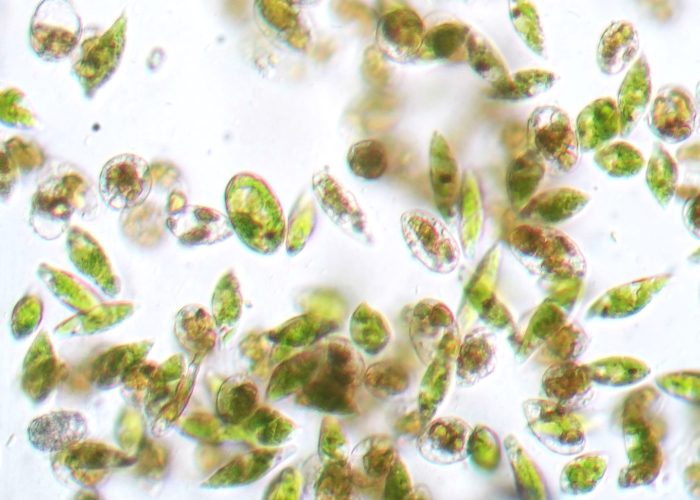According to data from the World Health Organization (WHO), 149 million children worldwide suffer from stunting. This condition can lead to high mortality rates, low Intelligence Quotient (IQ) and immune system function, and an increased risk of various metabolic syndromes. One effort to prevent stunting is by providing beneficial macro and micronutrients for child development. These nutrients can be obtained through superfoods, nutrient-dense foods that support health derived from bioactive compounds found in fruits and vegetables. However, the availability of superfoods faced many challenges. Therefore an alternative to superfoods is needed.
Euglena is a candidate for superfood because it is safe for human consumption and can thrive in various environmental conditions. It produces essential amino acids, polyunsaturated fatty acids (PUFAs), and bioactive metabolites. Unfortunately, its metabolite production is lower than superfoods, necessitating a polyploidization to enhance metabolite production. Naturally, Euglena only produces about 44 micrograms/milligrams of polyunsaturated acid, 47% amino acids, and approximately 100 mg of paramylon.
Addressing this issue, five UGM students from different disciplines—Novia Noor Rachmawati (Biology 2020), Tiara Amelia Putri (Biology 2020), Haris Dwi Nugroho (Biology 2021), Sabrina Gita Pramesti (Chemistry 2021), and Tabina Amanda Aurelia Surya (Chemical Engineering 2022)—are exploring the potential of a stunting-preventing superfood from local Euglena sp. microalgae. They employ colchicine-induced polyploidy genetic breeding methods to alter the organism’s chromosome set. The students are part of UGM Student Creativity Program (PKM) in the Exact Sciences Research category, under the guidance of Prof. Dr. Budi Setiadi Daryono, M.Agr.Sc.
Novia explained, “We use the polyploidization process because it can enhance the expression of functional genes and consistently pass down its mutated characteristics to subsequent generations. Therefore, we analyzed the performance, ploidy level, and metabolomic study of colchicine-mutated local Euglena sp. as an alternative source of essential amino acids and value-added bioproducts.”
Haris revealed that the Euglena sp. model was sourced from Dieng, Central Java, with concentration variations from 0% to 5% and an induction time of 24 hours. The goal is to obtain polyploid Euglena with improved morphology, DNA concentration, ploidy level performance, and amino acid and metabolite profiles.
Sabrina, who comes from a different scientific background than the other members, explained that an effective treatment to induce chromosomal ploidy mutations in Euglena sp. at a 1% concentration increases ploidy levels, carbohydrate production, paramylon, chlorophyll, carotenoids, and three essential amino acids (L-lysine, L-leucine, and L-histidine).
Novia, the team leader, added that further testing of the concentrations of each treatment showed an increase in amino acids, particularly in the essential amino acids L-Lysine, L-Leucine, and L-Histidine, which had the highest concentrations. These essential amino acids play a crucial role in preventing stunting as they function in bone development, immune system enhancement, and red blood cell formation. “We hope this research will be beneficial and contribute to the development of genetic modification in Euglena sp., adding to the body of knowledge on microalgae biotechnology, and positioning Euglena sp. as a high-value alternative protein bioproduct,” concluded Novia.



